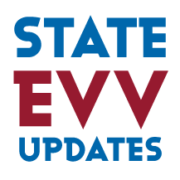Why We Resist Technology in the Workplace
People have been resisting technological advances for hundreds of years. Nowadays, we wonder why people ever avoided mechanical farming equipment or doubted the usefulness of personal computers. But as far as we venture back into the history of technology, someone is always hesitant to adopt something new, even if it simplifies their work. The human services industry is no exception to this.
Here are a few common reasons agency staff resist technology and some considerations to ease any doubts you may have:
“It’s Not the Way We Do Things”
Many are wary to introduce technology into their workflow because it means change. Change is hard. Especially when it means moving away from familiar tools like pen and paper and Excel spreadsheets toward the unknown complexities of technology. But if an organization cannot adapt to anything new, it will not thrive.
Workforce management technology is designed to make things easier for an organization. After the initial shock of unfamiliarity passes, you will find that the new way of doing things is simpler and more streamlined. Instead of typing all your time and attendance data into the payroll system, you can import it in seconds.
“Implementation Takes Too Long”
Technology implementation can be a pain, especially in large agencies set in their ways. But the truth is, implementation does not have to take forever.
The biggest barrier to a successful implementation is poor staff compliance. This can occur when managers and executives do not clearly describe the benefits of the new technology or provide adequate training. Most implementation snafus are easily avoidable with a strong compliance plan. As an example, read the story of an agency in Pennsylvania that fully implemented a new time and attendance system in a few weeks.
“We Can’t Afford It”
If you look at the dollar expense of new technology, you may be tempted to write it off. Who needs another cost when resources are already strained? But the truth is that technology has high potential for return-on-investment.
If you have trouble visualizing the long-term savings of effective technology, consider the ways technology saves money:
- Time – Technology reduces data entry and other manual tasks that eat time. The people who previously performed those tasks can focus their efforts on more meaningful work.
- Productivity – Agencies can achieve higher goals with technology. Workforce management software can produce complex results and analyze them in minutes to tell you how to maximize the organization’s potential.
- Employee retention – Technology gives employees more access to their work and more power over their benefits. This helps them stay engaged and happy in the organization.
When implemented correctly, technology can save your organization far more than it costs up front. For more tips, read this eBook and learn six best practices for introducing new technology in your organization.

 2018 MITC
2018 MITC 2018 MITC
2018 MITC